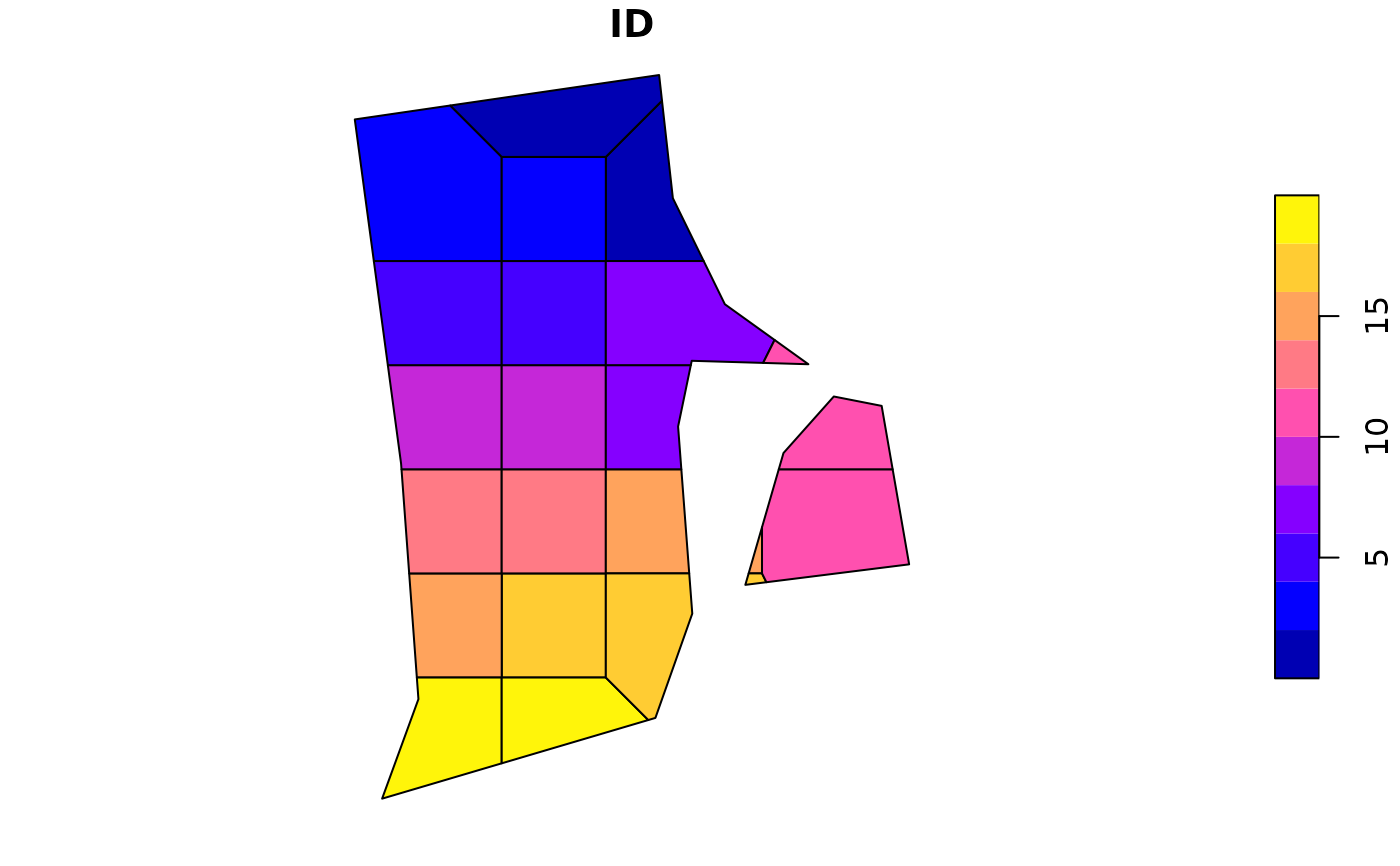
Generate a sampling grid based off of regularly sampled points across the species range.
PointBasedSample.RdThis function utilizes a regular, or nearly so in the case of existing collections, grid of points to develop a sampling scheme or n polygons.
Arguments
- polygon
the input sf polygon, i.e. species range or administrative unit, where sampling is desired.
- n
Numeric. The total number of desired collections. Defaults to 20.
- collections
an sf point geometry data set of where existing collections have been made.
- reps
further arguments passed to np.boot
- BS.reps
number of bootstrap replicates for evaluating results.
Value
A list containing two objects, the first the results of bootstrap simulations. The second an sf dataframe containing the polygons with the smallest amount of variance in size.
Examples
#' Utilize a grid based stratified sample for drawing up polygons
ri <- spData::us_states |>
dplyr::select(NAME) |>
dplyr::filter(NAME == 'Rhode Island') |>
sf::st_transform(32617)
system.time(
out <- PointBasedSample(polygon = ri, reps = 10, BS.reps = 10) # set very low for example
)
#> user system elapsed
#> 0.619 0.005 0.625
# the function is actually very fast; 150 voronoi reps, with 9999 BS should only take about
# 2 seconds per species so not much concern on the speed end of things!
head(out$SummaryData)
#> Metric Value
#> 1 variance.observed 16538241
#> 2 quantile.0.001 16541620
#> 3 lwr.95.CI 16538241
#> 4 upr.95.CI 17219398
#> 5 Voronoi.reps.asked 10
#> 6 Voronoi.reps.received 6
plot(out$Geometry)
